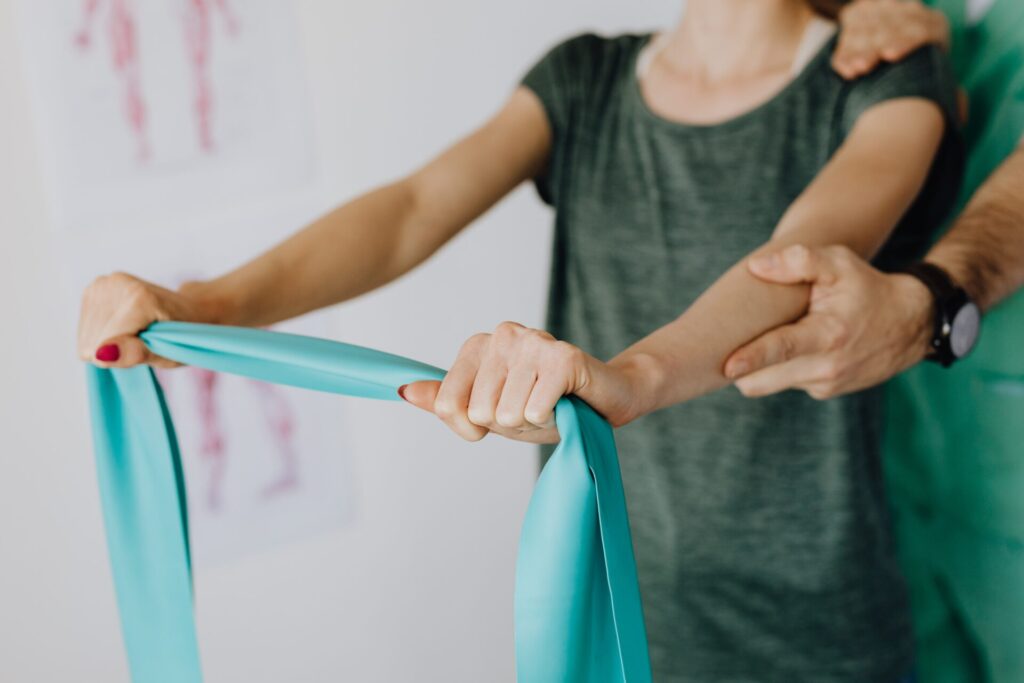The Role of Physical Therapy in Post-Surgical Shoulder Labral Repair Success
Introduction
Effective recovery from shoulder labral repair surgery requires the right care and support – and post-surgical physical therapy can make all the difference. Physical therapists are experts in providing safe, evidence-based treatment to help restore function after injury or surgery. Let’s take a look at what post-surgical physical therapy entails, why it is so important, and how it can help you achieve a successful recovery.
The Importance of Post-Surgical Physical Therapy
Post-surgical physical therapy helps patients recover normal levels of strength, range of motion, and function after shoulder labral repair surgery. It is also essential for reducing the risk of complications or further injury. By working closely with the patient’s surgical team and other healthcare providers, physical therapists can help ensure the recovery process is as safe and effective as possible.
Goals of Post-Surgical Shoulder Labral Repair Physical Therapy
The main goal of post-surgical physical therapy is to restore shoulder strength, range of motion, and function. It also helps reduce pain and swelling, improve balance and coordination, maintain joint mobility, and prevent further injury or recurrence. Physical therapists use a variety of treatments, including manual therapy, exercise, and educational strategies to help patients achieve these goals.
Phases of Post-Surgical Physical Therapy
Post-surgical physical therapy typically consists of three phases: the acute phase (immediately following surgery), the subacute phase (over the first few weeks after surgery), and the rehabilitation phase (over several weeks to months). Each phase focuses on different goals, and the physical therapist will work closely with the patient to determine the appropriate course of treatment.
Acute phase characteristics:
- Pain relief
- Control of swelling and inflammation
- Protection of the repaired labrum
Subacute phase characteristics:
- Improvement of shoulder strength, range of motion, and function
- Restoration of normal shoulder mechanics and control
- Appropriate use of the arm
Rehabilitation phase characteristics:
- Return to normal activities and sports
- Promotion of shoulder health and wellness
Techniques Used in Post-Surgical Physical Therapy
Physical therapists use a variety of manual therapy techniques, such as joint mobilization and soft tissue massage, to help reduce pain and swelling while protecting the repaired labrum. Exercise is also important for restoring strength, range of motion, proprioception, coordination, and function. This includes exercises to improve posture, shoulder girdle stability, and overall body mechanics.
Role of a Physical Therapist in Post-Surgical Recovery
Physical therapists play a vital role in helping patients recover from shoulder labral repair surgery. They evaluate the patient’s condition, develop an individualized treatment plan, implement that plan, progress that plans when appropriate, and re-evaluate progress throughout the process. Physical therapists are also responsible for educating patients on their condition, providing guidance and support, monitoring progress, helping to prevent future injuries, and motivating patients to reach their goals.
Patient’s Role in Post-Surgical Physical Therapy
Patients also have an important role in post-surgical physical therapy. A successful recovery from shoulder labral repair surgery depends on the patient’s commitment to their treatment plan, as well as their ability to follow through with home exercises and other recommendations. Patients must also be honest about their symptoms and progress in order for physical therapists to properly assess and adjust the treatment plan as needed.
Potential Challenges and Solutions in Post-Surgical Physical Therapy
Post-surgical physical therapy can present some challenges. These may include pain, swelling, and discomfort due to the surgery, difficulty regaining strength and range of motion, difficulty adhering to a home exercise program, or other issues that arise during recovery. It is important for patients to communicate any difficulties they are having with their physical therapist so that solutions can be developed.
Conclusion
Post-surgical physical therapy is an important part of recovery from shoulder labral repair surgery. Goals should be established in order to track progress, and individualized treatment plans should be developed by a qualified physical therapist. Patients must also take an active role in their recovery by following through with home exercises and other recommendations. With a successful physical therapy program, patients can achieve a full recovery from shoulder labral repair surgery.

